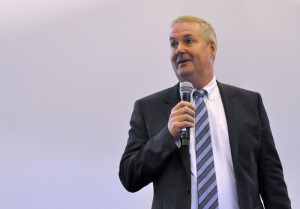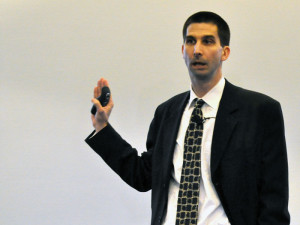Lessons from mining: Collection of real-time data key to step-change automation
By Joanne Liou, associate editor

The oil and gas industry is not alone in its journey to automate operations. Sharing similar benefits and challenges, Rio Tinto, an integrated global mining company, launched a project in 2007 that focuses on creating step-changes in the way the company mines for resources. Providing a high-level overview of the company’s Mine of the Future project, Andrew Stokes, global practice leader for surface mining innovation, and Eric Nettleton, manager of development, discussed what the company has learned and benefits already achieved through automation at the Drilling Systems Automation Symposium: Learning from Heavy Industry Front Runners on 4 March, just ahead of the 2013 SPE/IADC Drilling Conference in Amsterdam.
The supply picture for the mining industry has been challenging, Mr Stokes said, with easier mines already found and deeper ones found but not economically viable. To improve safety and to increase productivity and recovery rates – challenges similarly found in the oil and gas industry – requires innovation beyond continuous or incremental changes. “Seeing as technology is one of the few leads we have to really differentiate ourselves, there is a need to do this in the mining industry,” Mr Stokes noted.
Since the launch of the Mine of the Future program, the focus has been on three main components: surface mine automation, enhanced mineral recovery and rapid underground mine development. The vision for the program is to take “the best aspects of the past, which is the optimization, to come together to form an optimized large-scale mine,” Mr Stokes explained. “That’s the vision, and it’s largely driven not by removing people from operations but by automating the flow of information to people to make useful decisions in a timely manner, creating a holistic operational view.”
The collection of real-time data is key to creating the holistic view. “The challenge is developing that system for data integration,” Mr Stokes said. Given data from multiple sources during the operation, the trick is to tie all the information together, and rather than having a team of technicians try to infuse the data, he explained, have it done automatically.
“It’s not the individual components; it’s how it all comes together through systems integration, what we think will provide the real benefit to our operations.”

In developing the automated mine, a simple question that should be asked is, what should an automated mine look like? “It sounds obvious, but it’s a question that is rarely asked,” Mr Nettleton stated. Rio Tinto drew a blueprint of the end-to-end autonomous mine, identified all the components that would be needed and what information needs to be shared, allowing them to incrementally build the system. “The purpose of our system is to build an online, real-time model to provide the best picture of what’s happening so you can control your equipment and processes far better,” he said.
While Mr Nettleton believes they are still in the early days of the project, the company has already recorded benefits, seeing schedule variability drop from an average of 100 in 2008 to 53 in 2011. Train dump productivity also improved from an average of 100 in 2008 to 131 in 2011.
Although there is not a set metric to measure the benefits of automation, it is often compared relative to manual operations. “We are doing as well as manned operations, but more importantly what we’re trying to do with the auto-drill is make every drill as good as our best operator,” Mr Nettleton said. “If you get the best person out in the field, you’ll generally get a good result, but the purpose of automation is really to get that result consistently across the board.”
Mine of the Future is a trademark of Rio Tinto.




